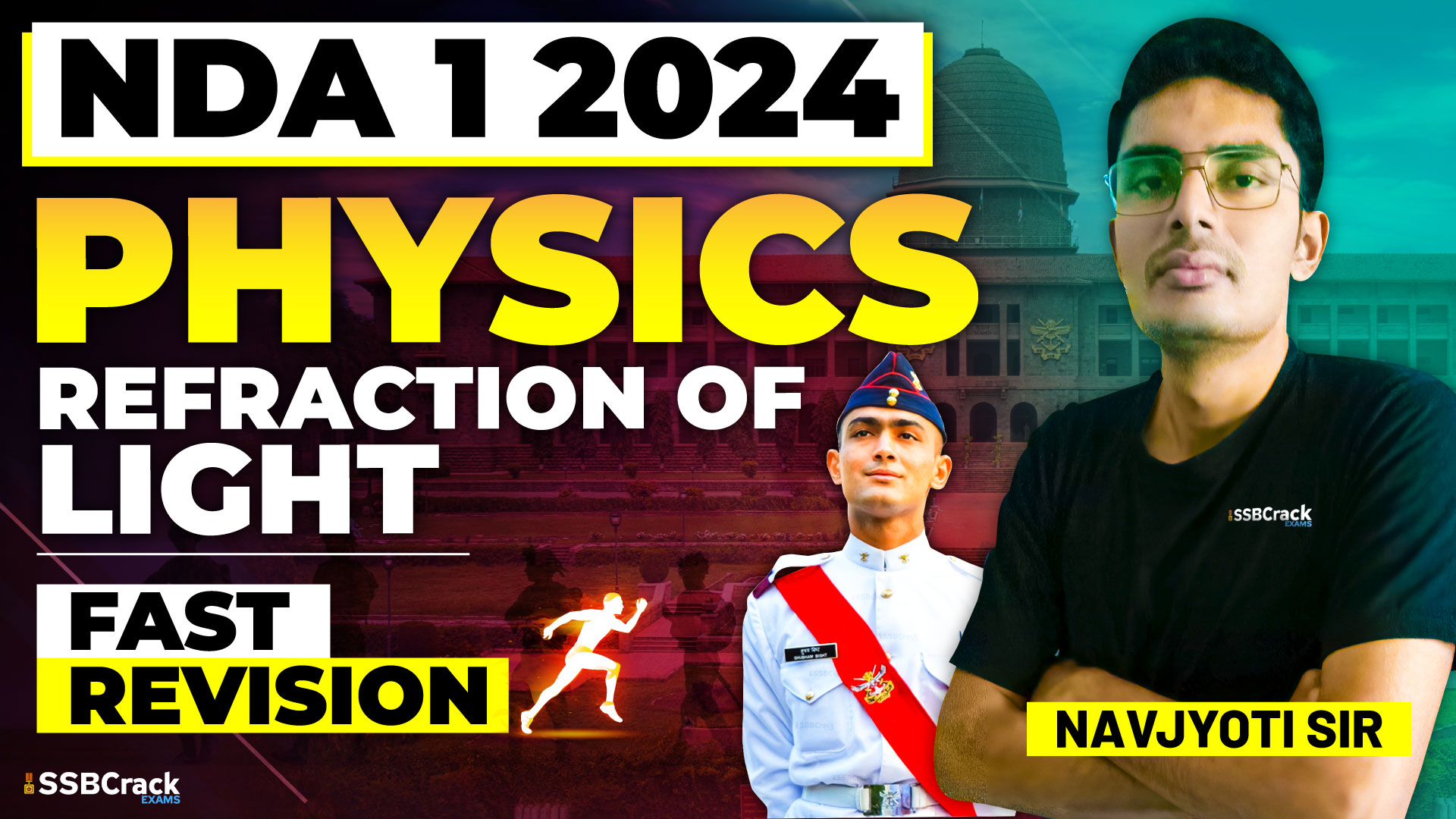Welcome to the NDA 1 2024 Physics Lecture focusing on the fascinating topic of refraction of light. In this session, we’ll explore the basic principles of refraction, delve into the laws governing it, discuss concepts like refractive index, lenses, and the formation of images by lenses, and explore phenomena such as total internal reflection and atmospheric refraction.
Introduction to Refraction
To begin, let’s understand what refraction of light is. Refraction occurs when light waves pass from one medium to another and change direction due to a change in speed. This bending of light is a fundamental phenomenon in optics and plays a crucial role in various everyday phenomena, from the bending of a straw in a glass of water to the formation of rainbows in the sky.
Laws of Refraction
The laws of refraction describe how light behaves when it enters a new medium. According to these laws :
- The incident ray, the refracted ray, and the normal to the interface of the two media at the point of incidence all lie in the same plane.
- The ratio of the sine of the angle of incidence to the sine of the angle of refraction is constant for any two given media and is known as the refractive index of the second medium with respect to the first.
Refractive Index – Absolute and Relative
The refractive index of a medium is a measure of how much the speed of light is reduced when it travels through that medium. It is defined as the ratio of the speed of light in a vacuum to the speed of light in the medium. There are two types of refractive index:
- Absolute refractive index : This is the refractive index of a medium with respect to a vacuum.
- Relative refractive index : This is the refractive index of one medium with respect to another medium.
Lenses
Lenses are optical devices that can bend and focus light rays. There are two main types of lenses:
- Convex lens : This lens is thicker at the center than at the edges and converges incoming light rays to a focal point.
- Concave lens : This lens is thinner at the center than at the edges and diverges incoming light rays.
Image Formed by Lens – Convex and Concave
When light passes through a lens, it undergoes refraction and forms an image. The nature and position of the image depend on the type of lens and the position of the object relative to the lens:
Convex lens :
- When the object is beyond the focal point, a real and inverted image is formed.
- When the object is at the focal point, no image is formed.
- When the object is between the focal point and the lens, a virtual and magnified image is formed.
Concave lens :
- A virtual and erect image is formed, regardless of the position of the object.
Power of Lens
The power of a lens is a measure of its ability to bend light rays and is defined as the reciprocal of its focal length. It is measured in diopters (D), where 1 diopter is equal to the power of a lens with a focal length of 1 meter. The greater the power of a lens, the greater its ability to converge or diverge light rays.
Total Internal Reflection
Total internal reflection occurs when a light ray traveling from a denser medium to a rarer medium strikes the interface between the two media at an angle greater than the critical angle. Instead of refracting into the second medium, the light ray is reflected back into the first medium. Total internal reflection is used in optical fibers and prisms, among other applications.
Atmospheric Refraction
Atmospheric refraction is the bending of light rays as they pass through the Earth’s atmosphere. This phenomenon causes celestial objects to appear higher in the sky than they actually are. Atmospheric refraction also contributes to optical illusions, such as the apparent flattening of the Sun’s disk during sunrise and sunset.
Conclusion
In this lecture, we’ve explored the fascinating world of refraction of light, from its basic principles to its various applications in optics and everyday life. Understanding refraction allows us to explain a wide range of optical phenomena and design innovative optical devices. Keep exploring, keep learning, and marvel at the wonders of light and its behavior!



















